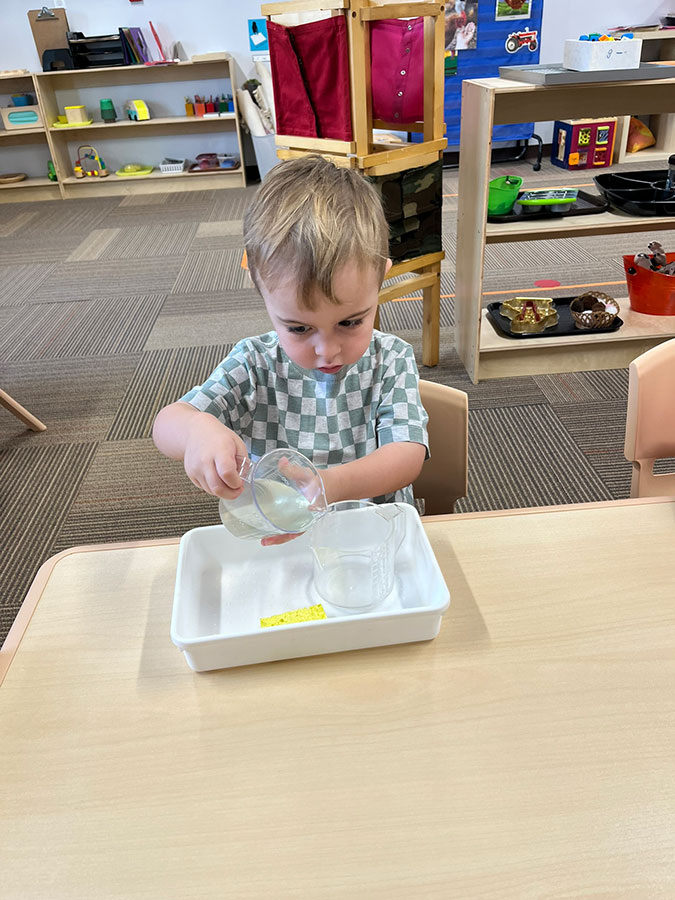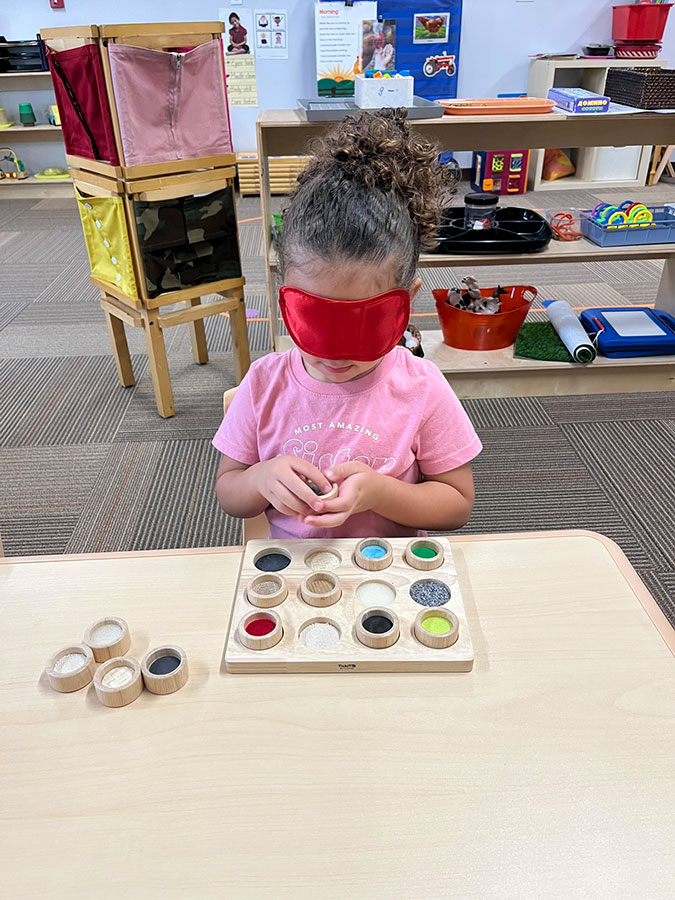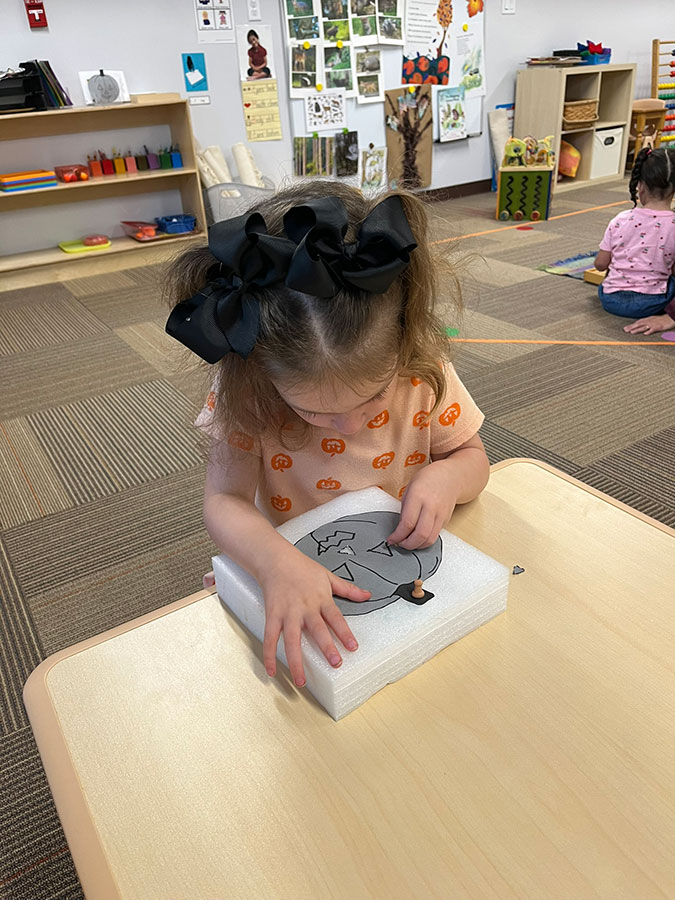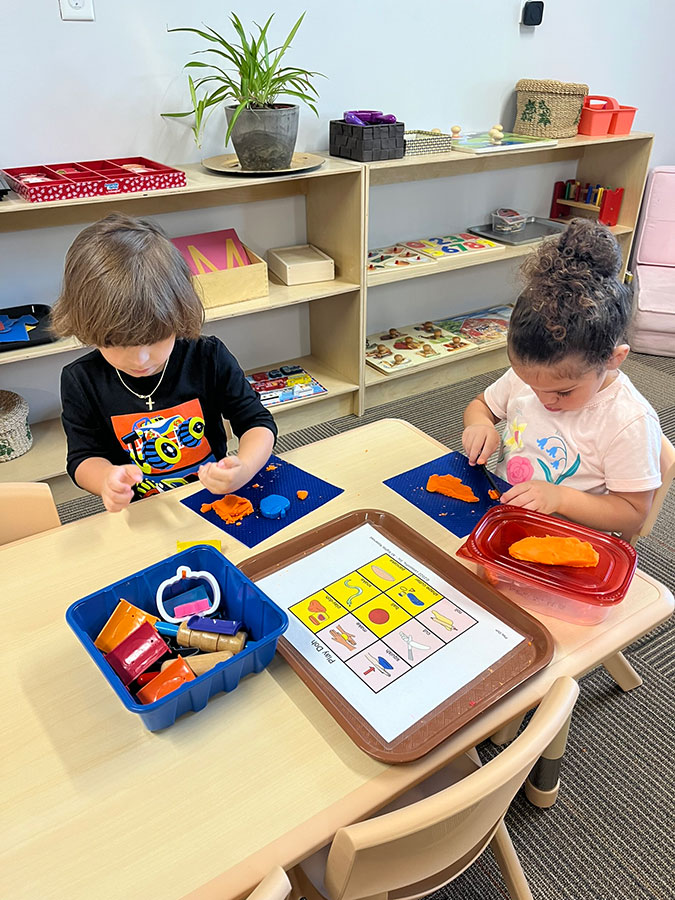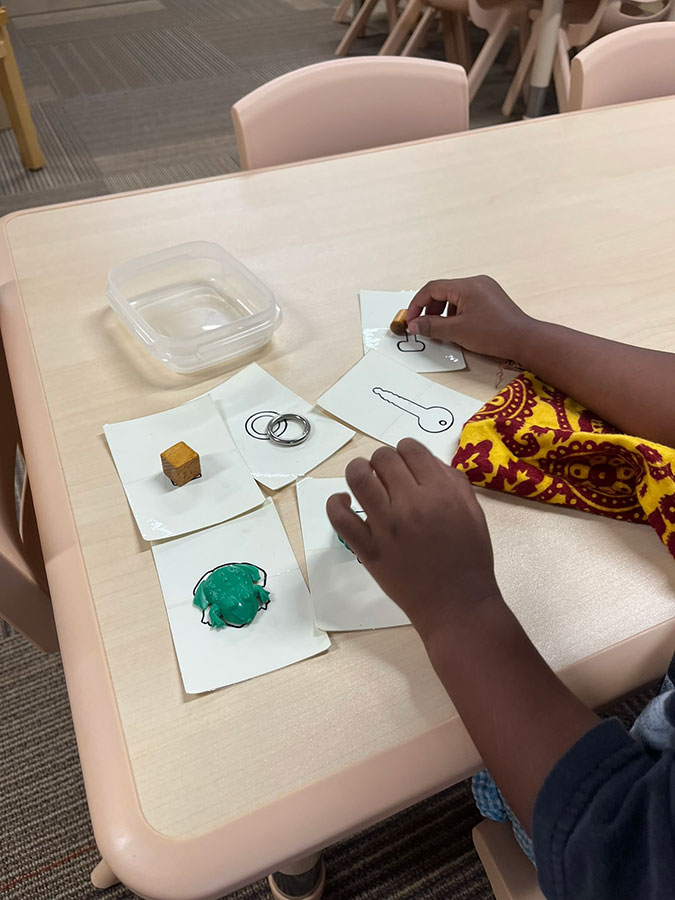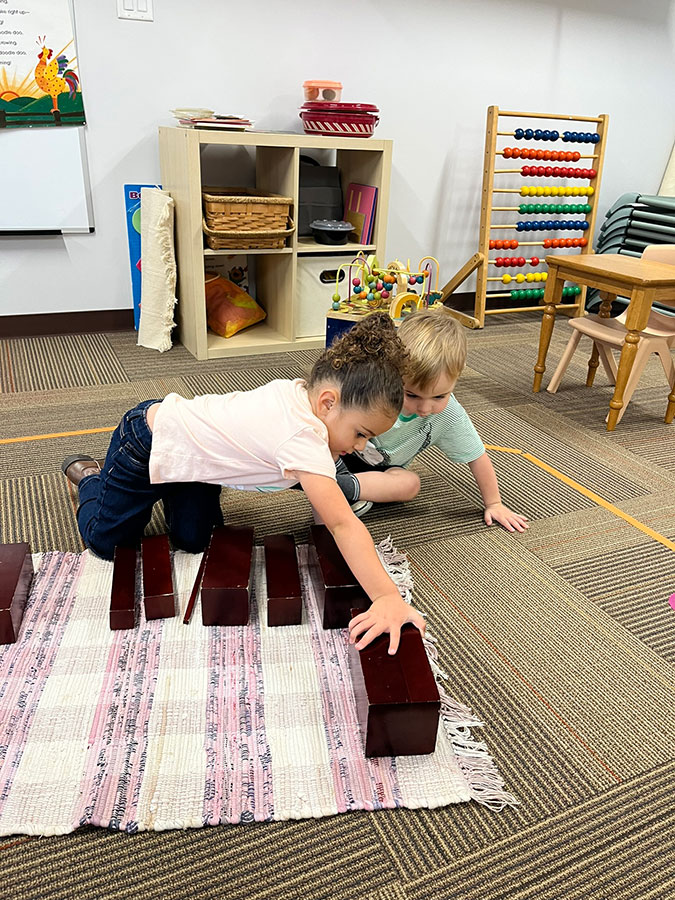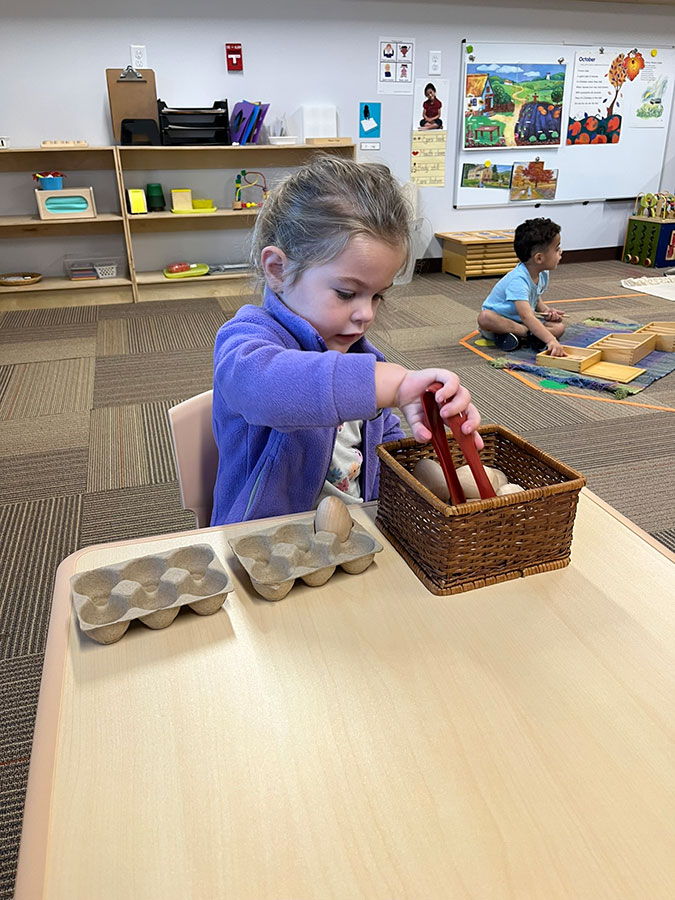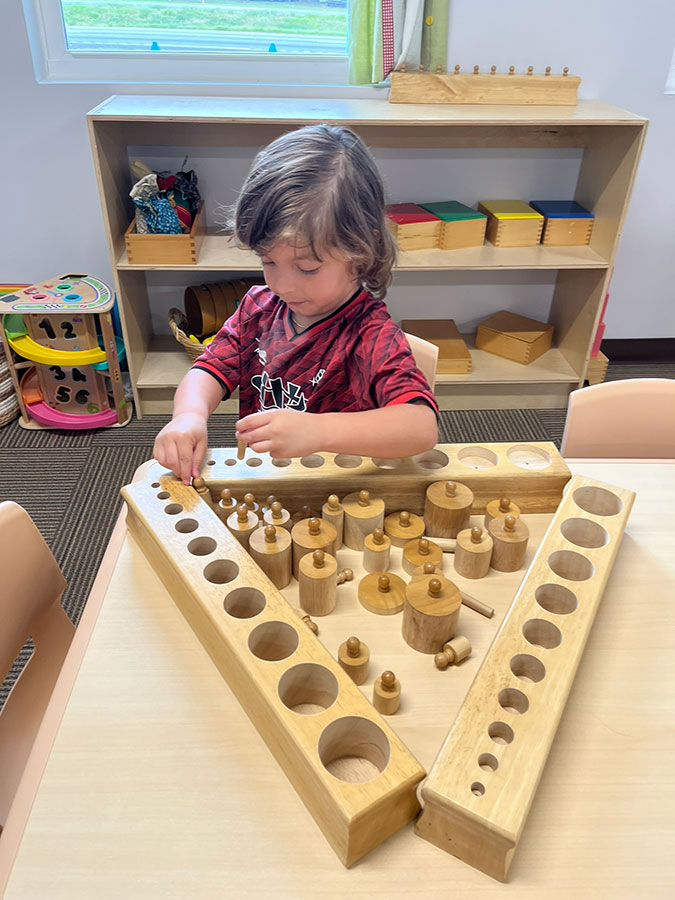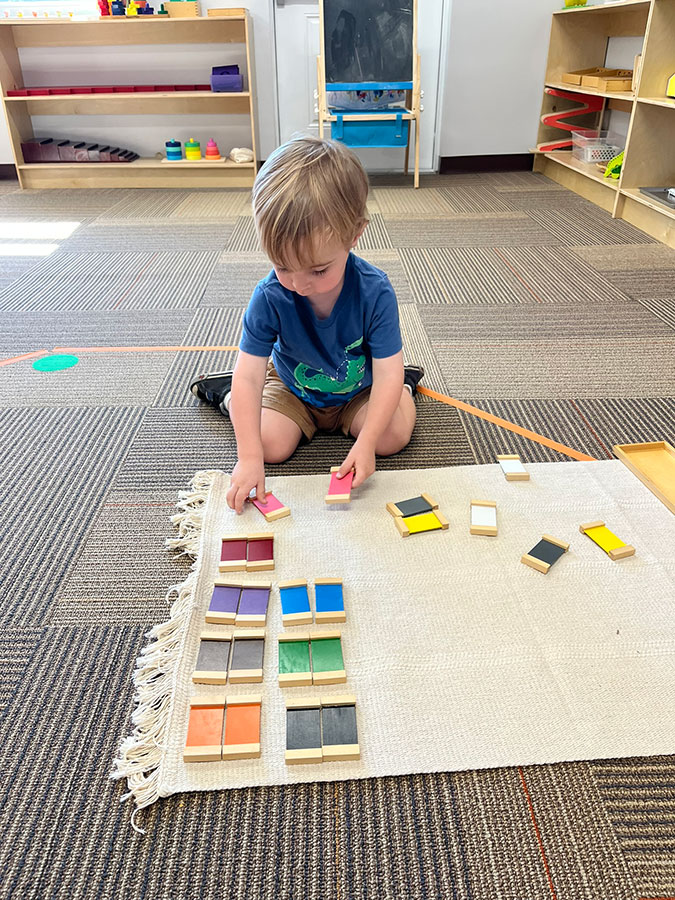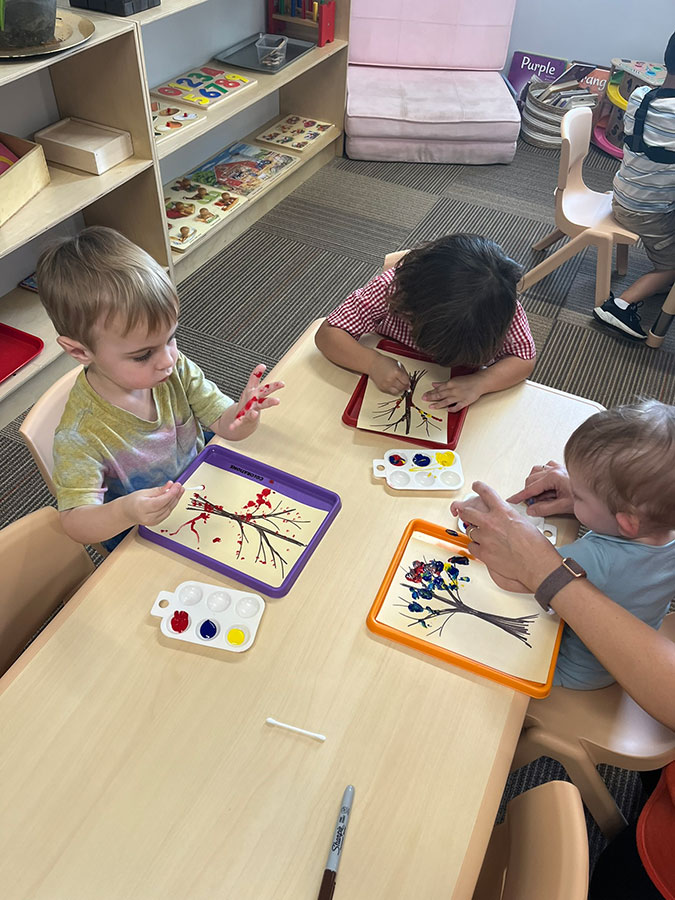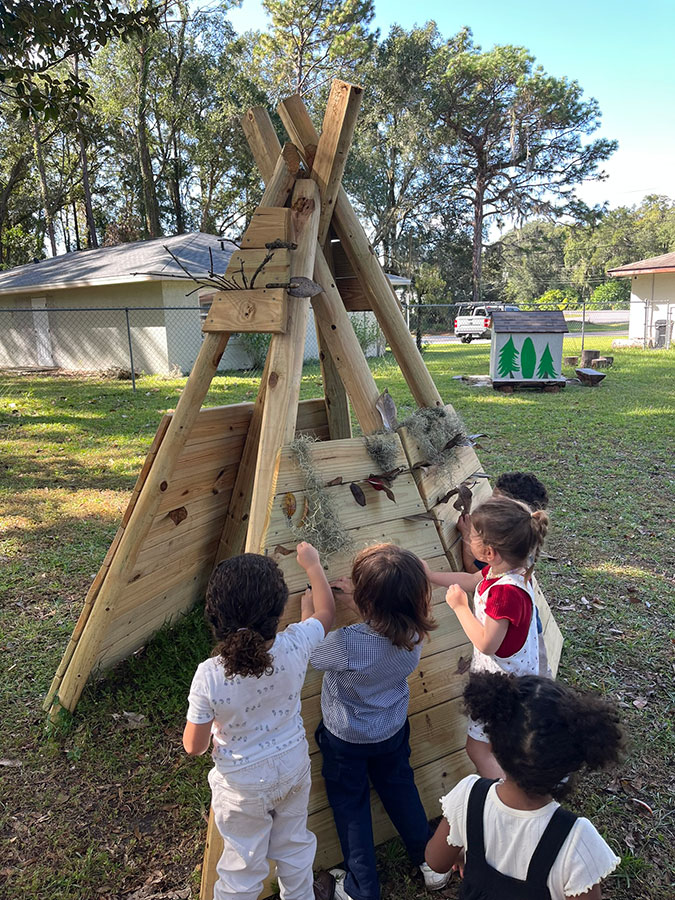Welcome! This guide is designed to introduce you to the principles of Montessori education and how it can benefit your child. Whether you’re exploring options for preschool or seeking ways to support learning at home, we’re here to help. At Belleview Montessori, we believe in fostering independence, curiosity, and growth—not just in our classrooms, but in every aspect of a child’s life. This guide draws from established Montessori philosophy and includes practical tips for home implementation. Our goal is to empower families because we care about your child’s development beyond enrollment.
Introduction to Montessori Education
Montessori education, developed by Dr. Maria Montessori over 100 years ago, is a child-centered approach that recognizes every child’s innate desire to learn through exploration and interaction with their environment. Unlike traditional education with rigid schedules and teacher-led instruction, Montessori emphasizes hands-on learning, independence, and respect for the child’s natural development.
Core Principles of Montessori Education
At the heart of Montessori education are a few guiding principles that define its unique approach to child development. These principles shape everything that happens in a Montessori classroom — from the way materials are arranged to how teachers interact with students. Dr. Maria Montessori’s insights into how children learn, grow, and relate to their environment form the foundation of this educational philosophy.
The Montessori method is built upon four key principles: The Absorbent Mind, The Prepared Environment, Freedom Within Limits, and The Role of the Educator.
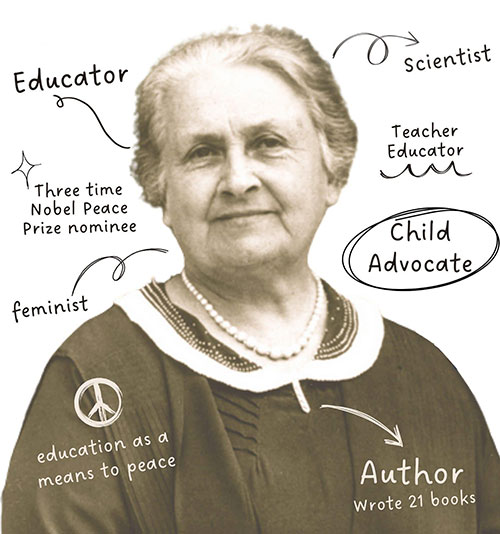
Together, these principles create an educational experience that nurtures the whole child — intellectual, emotional, social, and physical. They help children develop independence, concentration, respect, and a genuine love for learning. Each principle is interconnected, supporting a balanced environment where children are free to explore while guided toward purposeful growth.
Below is a closer look at each of these essential principles and how they work together to create the Montessori experience.
1. The Absorbent Mind
Children, especially from birth to age 6, absorb knowledge effortlessly from their surroundings, much like a sponge.
The Absorbent Mind is a foundational concept in Montessori education. The extraordinary capacity of young children, particularly from birth to around age 6, to effortlessly absorb knowledge, experiences, and skills from their environment without conscious effort or fatigue. This period is often likened to a sponge soaking up water, where the child’s mind takes in everything around them, forming the basis of their personality, intelligence, and worldview. Montessori viewed this as a “superpower” unique to early childhood, during which learning happens spontaneously and holistically, rather than through deliberate instruction. It’s not just about academic facts; it encompasses language, culture, social norms, motor skills, and emotional development.
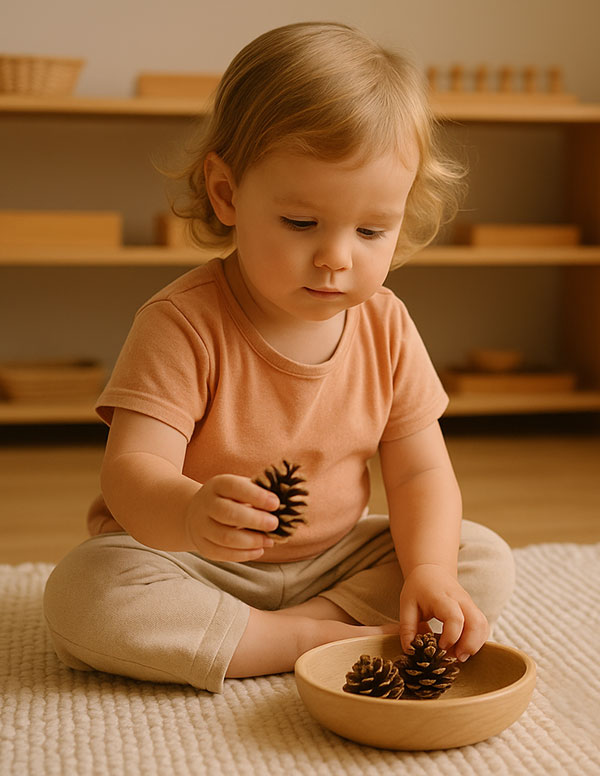
Furthermore, in Montessori, we can divide the absorbent mind into two sub-stages, each with distinct characteristics:
- Unconscious Absorbent Mind (Birth to Age 3): During this phase, children absorb information subconsciously, without intentional effort or awareness. It’s like building the foundation of a house – they internalize experiences that shape their core abilities and identity. Learning is instinctive and driven by “sensitive periods” (windows of heightened interest in specific skills, like language or movement). At this stage, the child is creating themselves from the environment, often through sensory and motor exploration.
- Conscious Absorbent Mind (Ages 3 to 6): Here, absorption becomes more deliberate as the child gains self-awareness and begins to organize and refine what they’ve already taken in. They start to explore with purpose, repeating activities to master them, and show curiosity about “why” and “how” things work. This stage builds on the unconscious foundation, allowing for more structured learning while still being child-led.
Why It Matters in Montessori Education
The absorbent mind concept revolutionized early childhood education by shifting focus from adult-directed teaching to child-centered discovery. It explains why pressuring young children with formal academics can be counterproductive; instead, providing a “prepared environment” maximizes their natural learning potential. Research supports this: Studies show Montessori-educated children often exhibit stronger executive function, creativity, and social skills, attributed to this early absorptive phase.
2. Prepared Environment
Spaces designed to encourage self-directed discovery, with materials that promote practical skills, sensory exploration, and cognitive growth.
In Montessori education, the classroom is more than just a room — it is a living environment carefully designed to support each child’s natural desire to learn and grow. Dr. Maria Montessori called this the Prepared Environment, and it remains at the heart of every authentic Montessori school.
The Prepared Environment is intentionally structured to meet the developmental needs of the child — physically, emotionally, socially, and intellectually. Every detail serves a purpose, creating a space that promotes focus, independence, and respect.
Key Elements of the Prepared Environment
- Order and Beauty
Montessori classrooms are calm, organized, and inviting. Materials are arranged neatly on low, open shelves where children can see and reach them easily. Everything has a specific place, helping children develop a sense of order, responsibility, and inner peace. The use of natural materials, soft colors, and real objects creates an atmosphere that encourages concentration and care. - Child-Sized and Accessible
Furniture, tools, and materials are designed for the child’s size and ability. Toilets, sinks, tables, chairs, and shelves are low to the ground; everything is within reach. This accessibility allows children to take care of themselves and their environment — pouring their own water, cleaning up spills, and setting up their work — without depending on adults.
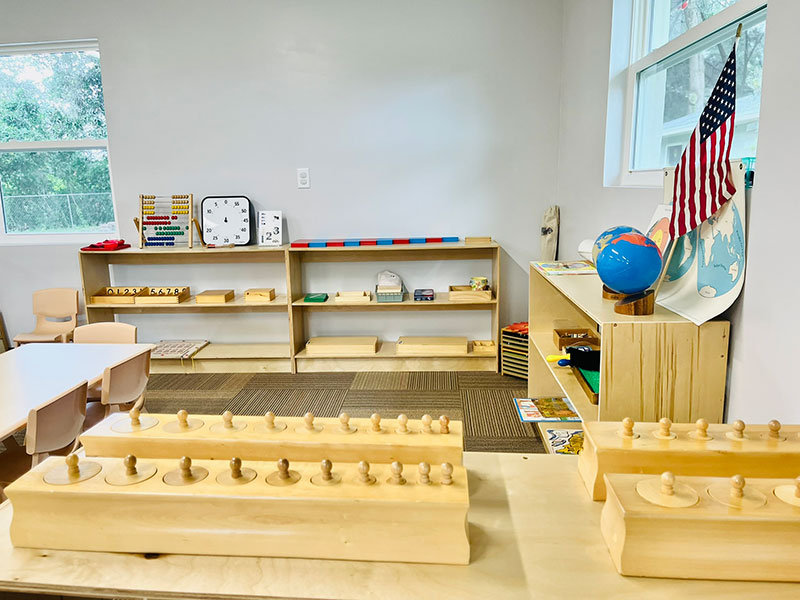
- Child-Sized and Accessible
Furniture, tools, and materials are designed for the child’s size and ability. Toilets, sinks, tables, chairs, and shelves are low to the ground; everything is within reach. This accessibility allows children to take care of themselves and their environment — pouring their own water, cleaning up spills, and setting up their work — without depending on adults. - Purposeful, Hands-On Materials
Every object in the classroom is there for a reason. Montessori materials are designed to isolate specific concepts — such as size, color, sound, or quantity — and invite children to explore through hands-on learning. Each material has a clear beginning, process, and end, allowing the child to recognize success and correct mistakes independently. - Mixed-Age Community
Montessori classrooms are typically multi-age, often spanning three years. Older children model leadership, patience, and mastery, while younger children learn through observation and imitation. This natural social structure fosters cooperation, empathy, and a sense of belonging.
Why the Prepared Environment Matters
When children enter a Montessori classroom, they quickly sense that it’s their space. Everything around them communicates trust, respect, and expectation. They know where things belong, how to use them, and that they are capable of caring for themselves and their surroundings.
In this environment, children don’t just learn academic concepts — they learn how to think, how to focus, and how to take responsibility. The Prepared Environment supports the whole child, nurturing independence, curiosity, and a lifelong love of learning.
3. Freedom Within Limits
Children choose activities based on their interests, building concentration and self-discipline.
Freedom Within Limits is a core principle in Montessori education, emphasizing a balanced approach where children are granted the autonomy to explore, choose, and learn based on their interests and developmental stage, while operating within clearly defined boundaries that ensure safety, respect, and order. Developed by Dr. Maria Montessori, this concept recognizes that true freedom isn’t unrestricted chaos but a structured liberty that empowers children to develop self-discipline, responsibility, and independence. It aligns with the idea that children thrive when they can direct their own learning (tapping into their “absorbent mind“) in a “prepared environment” designed to support their natural curiosity, while limits provide the security needed for focused growth. This principle is not about permissive parenting or teaching; instead, it’s a deliberate framework that fosters intrinsic motivation and prepares children for real-world responsibilities.
In essence, freedom allows children to follow their inner drive to learn, while limits set by adults create a safe, predictable space that respects the community and individual needs. This balance helps children internalize rules, build confidence, and learn from natural consequences, rather than external punishments or rewards.
Key Elements of Freedom Within Limits
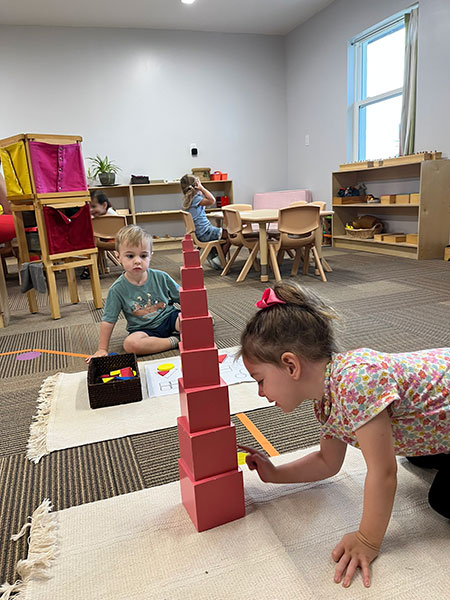
The principle breaks down into several interconnected components, ensuring that freedom is purposeful:
- Freedom of Choice: Children are encouraged to select activities that align with their interests and readiness, promoting engagement and ownership over their learning. This isn’t unlimited; choices are curated from a prepared environment with age-appropriate materials.
- Freedom of Movement: Within the classroom or home, children can move freely to access materials or interact with peers, as long as it doesn’t disrupt others. This supports physical development and exploration during sensitive periods.
- Freedom to Repeat and Explore: Children can work on an activity for as long as they wish, repeating it to achieve mastery, which builds concentration and deep understanding.
- Limits for Safety and Respect: Boundaries are established to protect the child, others, and the environment, such as no harming people or materials. These expectations are communicated clearly and consistently, often through modeling and natural consequences.
- Flexibility and Adaptation: Limits evolve with the child’s development; what starts as strict guidance for toddlers becomes more expansive for older preschoolers. Routines provide structure, but there’s room for adjustment based on the child’s needs.
4. Role of the Educator
Teachers (or “guides”) observe and facilitate rather than direct, allowing children to learn at their own pace.
The Role of the Educator in Montessori education is fundamentally different from that in traditional teaching models. Rather than being the central figure delivering lectures or directing activities, the Montessori educator, often called a guide or facilitator, acts as an observer, supporter, and preparer of the environment, enabling children to lead their own learning through self-discovery and intrinsic motivation. Dr. Maria Montessori emphasized that the educator’s primary task is to respect the child’s natural development, intervening minimally to foster independence, concentration, and joy in learning. This role requires specialized training, deep observation skills, and a commitment to creating structures that empower children to trust themselves as learners. The educator is not a “teacher” in the conventional sense but a humble partner in the child’s unfolding potential, aligning with Montessori’s view that education is a process of self-construction.
This approach shifts the focus from adult-led instruction to child-centered exploration, where the educator’s subtle guidance helps children navigate their “absorbent mind” during sensitive periods of development. It’s a role that demands patience, empathy, and ongoing professional development to effectively support diverse learners.
Key Characteristics of the Montessori Educator’s Role
The educator’s responsibilities are multifaceted, emphasizing preparation, observation, and facilitation over direct teaching. Here are the core elements:
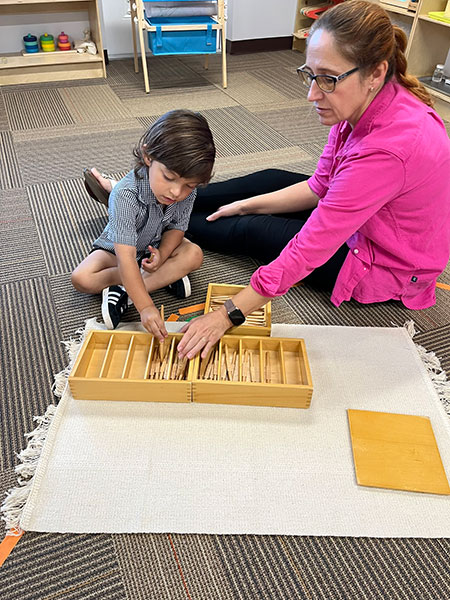
- Observer: The educator keenly watches children to understand their interests, strengths, challenges, and developmental stages, using these insights to tailor the environment and activities. This non-intrusive observation allows for timely, individualized interventions without disrupting the child’s focus.
- Guide and Facilitator: Instead of lecturing, the educator introduces materials and concepts at the right moment, demonstrating their use and then stepping back to let the child explore independently. They provide gentle redirection, answer questions, and model positive behaviors like respect and kindness.
- Preparer of the Environment: The educator maintains a safe, orderly, and stimulating prepared environment with accessible, age-appropriate materials that invite self-directed learning. This includes organizing the space, ensuring cleanliness, and rotating activities to match the group’s needs.
- Mentor and Supporter: They foster emotional and social growth by encouraging collaboration, resolving conflicts peacefully, and building a sense of community. The educator also collaborates with parents, sharing observations to support consistent development at home.
- Role Model: By embodying calm, respectful, and purposeful behavior, the educator inspires children to emulate these qualities, promoting self-discipline and intrinsic motivation.
This philosophy isn’t confined to schools it can start at home from the day your child is born, helping them unfold their potential naturally.
To stimulate life, leaving it free, however, to unfold itself – that is the first duty of the educator.
Dr. Maria Montessori
What are the Benefits of Montessori Education
Montessori education supports holistic development, preparing children not just academically but for life. Research, such as a 2017 study from the National Center for Montessori in the Public Sector, shows that Montessori students often outperform peers in areas like math, reading, and social skills by kindergarten.
Key benefits include:
- Academic Readiness: Individualized lessons build strong foundations in language, math, science, and culture through engaging materials.
- Social and Emotional Growth: Mixed-age classrooms foster empathy, collaboration, and conflict resolution.
- Independence and Confidence: Children learn practical life skills (e.g., pouring, dressing, cleaning), leading to a sense of accomplishment.
- Creativity and Critical Thinking: Open-ended activities encourage problem-solving and innovation.
- Long-Term Outcomes: Studies indicate Montessori alumni exhibit higher levels of well-being, adaptability, and lifelong learning.
In a Montessori setting, your child becomes a “normalized child”, calm, focused, and intrinsically motivated, equipped to thrive in an ever-changing world.
Implementing Montessori at Home
Montessori isn’t just a school philosophy; it’s a way of life that empowers children to become confident, capable, and curious learners in every environment.
By bringing Montessori principles into your home, you can create a space that supports your child’s independence, respect, and joy in learning, extending the growth that begins in our classrooms at Belleview Montessori School.
The Prepared Environment at Home
The Prepared Environment is central to Montessori education, and it can be recreated at home in simple, practical ways. A Montessori-inspired home is calm, orderly, and designed around the child’s needs. It encourages exploration and independence, allowing children to participate meaningfully in daily life.
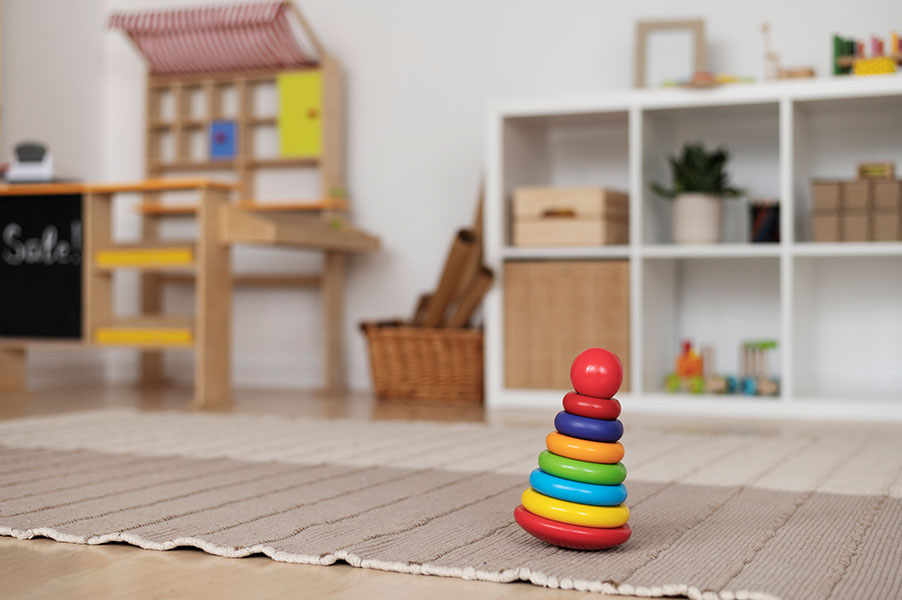
Create a space that invites exploration:
- Keep It Simple: Choose natural materials, neutral colors, and minimal distractions. Avoid cartoon-themed décor and opt for real, functional tools, small cups, wooden spoons, or a child-sized broom.
- Child-Sized Spaces: Use low tables, floor beds, and shelves at your child’s eye level. This allows them to choose activities or get dressed without relying on adults, reinforcing independence and self-confidence.
- Order and Accessibility: Organize toys and books in baskets or trays, limiting each shelf to a few items. Rotate materials regularly based on your child’s interests to prevent clutter and keep learning fresh.
- Include Real and Natural Materials: Offer real-life objects instead of toys that only entertain. For example, a small glass pitcher for pouring water or a real fruit for cutting practice. Handling real objects helps children develop coordination, care, and a sense of purpose.
- Extend to Every Room: Involve your child in home routines — a stool in the kitchen for safe meal prep, a low hook for hanging jackets, or a step stool at the sink for independent handwashing.
Montessori at home is not about perfection — it’s about creating an environment that says, “You can do it yourself.”
Freedom Within Limits at Home
Children thrive when they are given choices — but within clear, consistent boundaries. This balance of freedom and structure helps them develop self-control, decision-making skills, and a sense of responsibility.
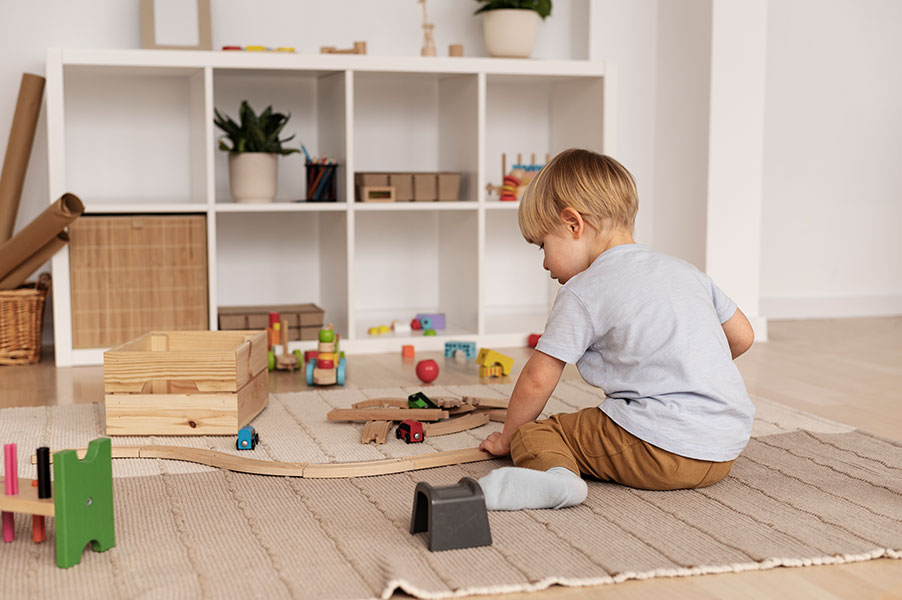
Here are a few simple ways to practice this at home:
- Mealtime Choices: Offer two healthy snack options (freedom), but require eating at the table (limit). This encourages independence while teaching manners and routine.
- Playtime Exploration: Let your child choose toys from a low shelf (freedom), but have them put each toy away before starting another (limit). This teaches order and respect for the environment.
- Bedtime Routine: Allow your child to pick a bedtime story (freedom) within a set lights-out time (limit). Structure helps children feel secure, while small choices build confidence.
Freedom within limits gives children a sense of control while guiding them toward positive, responsible behavior.
Parenting the Montessori Way
Montessori parenting is rooted in observation, patience, and respect. By following your child’s natural rhythm and curiosity, you’ll discover countless opportunities for learning together.
- Observe and Follow the Child: Watch what captures your child’s attention — a fascination with insects, music, or cooking — and build on those interests.
- Embrace Mistakes: Treat spills or accidents as learning moments. Involve your child in cleanup, fostering responsibility rather than shame.
- Avoid Over-Intervention: Step back and allow exploration. Trust that small struggles — buttoning a shirt or pouring milk into a cup — lead to big growth.
- Encourage Effort Over Outcome: Celebrate persistence and focus instead of rewards. This builds intrinsic motivation and resilience.
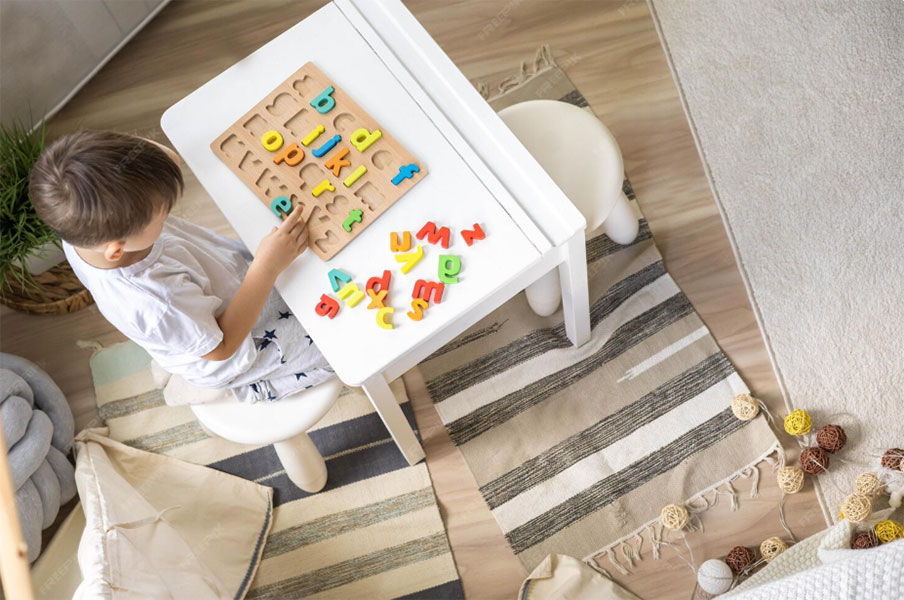
Age-Specific Montessori Activities
For Babies (0–12 Months):
Provide safe floor space for free movement, baskets of simple toys within reach, and real tableware during family meals. Encourage exploration through touch and sound.
For Toddlers (1–3 Years):
Offer simple tasks such as pouring water, sweeping crumbs, or sorting objects by color or size. Include seasonal or nature-based activities, such as leaf matching or flower arranging. Support potty learning with independence in mind.
For Preschoolers (3–5 Years):
Introduce early reading and math materials, sensory play, and real household contributions — helping prepare snacks, folding laundry, or watering plants.
Discipline Through Independence
In Montessori, discipline grows from within, not from punishment.
When conflicts arise or tantrums occur, stay calm, listen, and offer choices within limits (“Would you like to take a break in your room or help me clean up?”). This helps your child learn self-regulation and empathy.
Focus on guidance, not control. By modeling patience and respect, you model for your child how to handle frustration and responsibility. Over time, they learn that freedom and discipline go hand in hand.
The Benefits of a Montessori Home
Bringing Montessori principles into your home nurtures:
- A calmer environment, where routines flow naturally
- A more confident child, eager to help and explore
- A stronger family connection, built on trust, respect, and shared learning
When home and school work together, children experience consistency and security — the foundation for lifelong growth and happiness.
Why Choose Belleview Montessori School?
Located conveniently on US-441 in Belleview, FL (no more than 20 minutes from any part of Ocala), our school offers a nurturing environment for children ages 12 months to 5 years in our Early Childhood program, with plans to expand to elementary grades. We’ve been open since August 6, 2025, and are committed to authentic Montessori principles with qualified, trained staff and low child-to-teacher ratios for personalized attention.
What sets us apart:
- Individualized Approach: We tailor education to each child’s needs, unlike traditional daycares focused solely on supervision.
- Transparent Pricing: No hidden fees beyond a $50 application; our tuition covers everything, making us competitive with other Montessori schools in Ocala.
- Convenient Location: Ideal for families in Belleview, Ocala, or commuters along US-441 who value quality education during their daily routines.
Community Focus: We’re building a supportive network for families, emphasizing not just school but home-based learning to enhance your child’s growth.
If you would like to get more information or schedule a tour at our school, feel free to fill in this form, and we will reach out to you as soon as possible.

